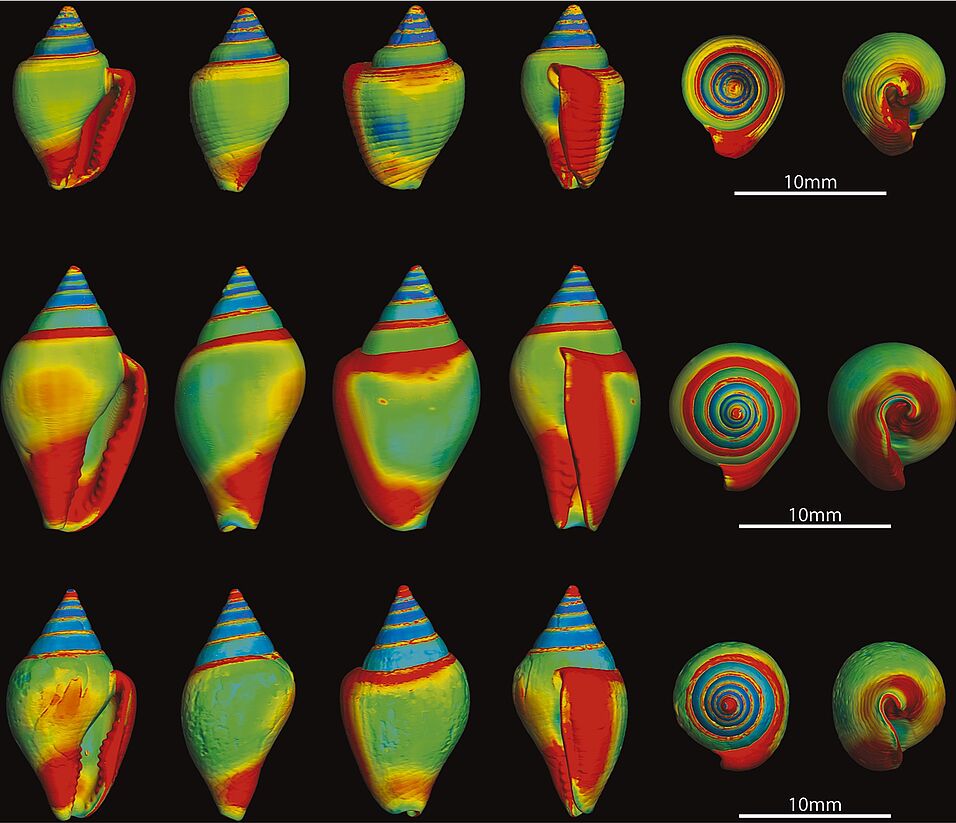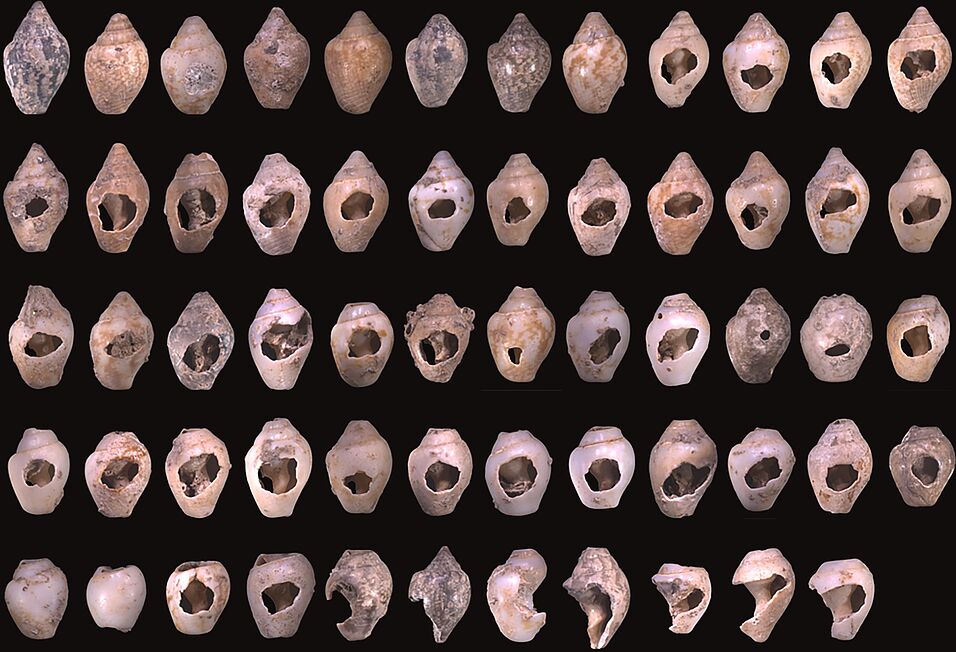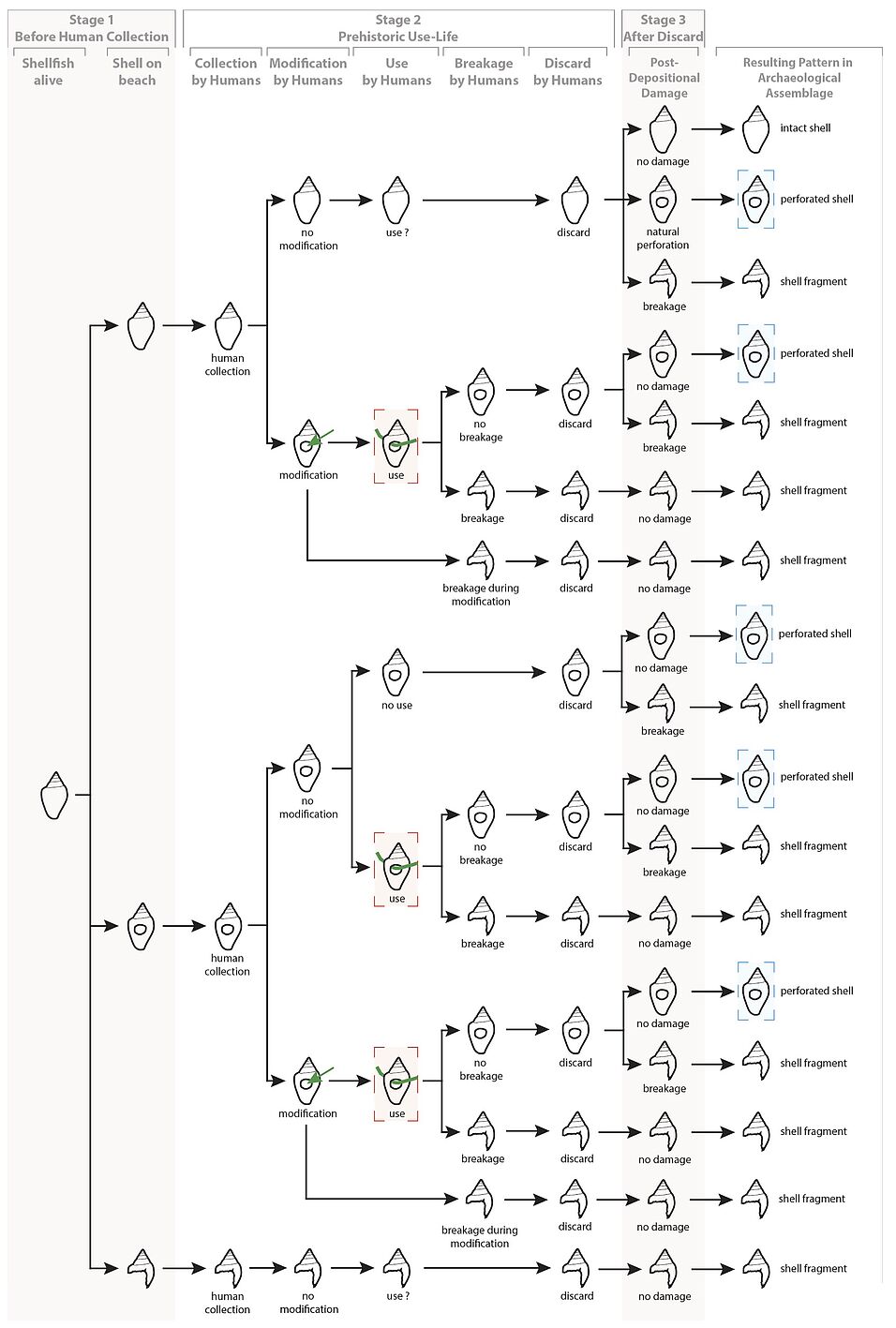Dr. Marjolein D. Bosch, PostDoc at the Austrian Archaeological Institute and external lecturer and PalArchGroup member, has just published a paper in Journal of Archaeological Science: Reports on perforations in Columbellidae shells.
The paper is about personal ornamentation in the Early Upper Palaeolithic (~45-40 ka BP) of Ksâr ‘Akil (Lebanon) and how to see the difference between human made beads and naturally perforated shells. The authors used microCT scans to create models of shell thickness to better understand the relation between shell structure and the distribution of perforation in both archaeological assemblages and beach collected ones. Their results suggest that shells were made into beads from the beginning of their use at the site.
Bosch, M. D., Buck, L. T., & Strauss, A. (2023). Perforations in Columbellidae shells: Using 3D models to differentiate anthropogenic piercing from natural perforations. Journal of Archaeological Science: Reports, 49, 103937. https://www.sciencedirect.com/science/article/pii/S2352409X23001128



